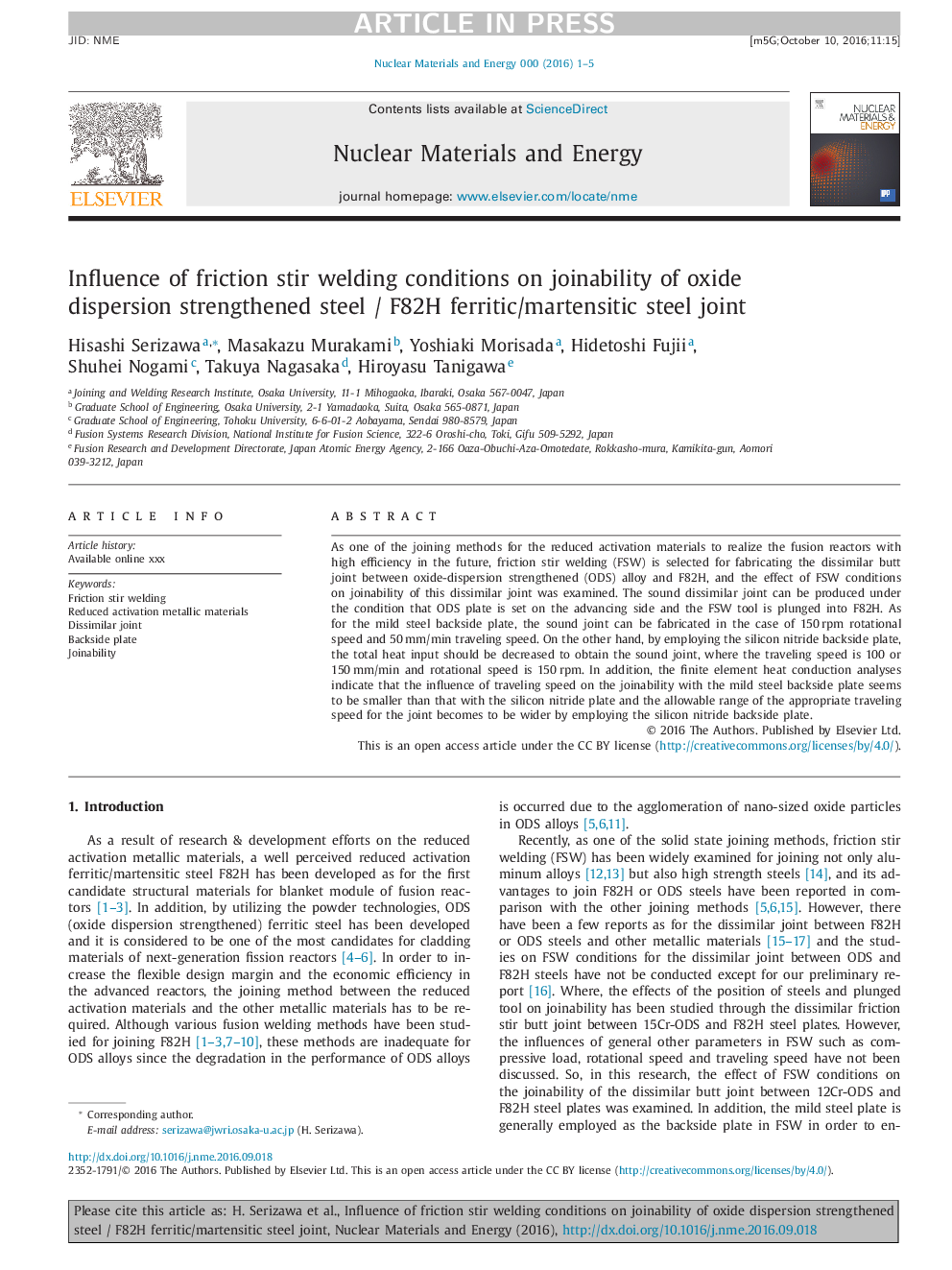| Article ID | Journal | Published Year | Pages | File Type |
|---|---|---|---|---|
| 7987642 | Nuclear Materials and Energy | 2016 | 5 Pages |
Abstract
As one of the joining methods for the reduced activation materials to realize the fusion reactors with high efficiency in the future, friction stir welding (FSW) is selected for fabricating the dissimilar butt joint between oxide-dispersion strengthened (ODS) alloy and F82H, and the effect of FSW conditions on joinability of this dissimilar joint was examined. The sound dissimilar joint can be produced under the condition that ODS plate is set on the advancing side and the FSW tool is plunged into F82H. As for the mild steel backside plate, the sound joint can be fabricated in the case of 150Â rpm rotational speed and 50Â mm/min traveling speed. On the other hand, by employing the silicon nitride backside plate, the total heat input should be decreased to obtain the sound joint, where the traveling speed is 100 or 150Â mm/min and rotational speed is 150Â rpm. In addition, the finite element heat conduction analyses indicate that the influence of traveling speed on the joinability with the mild steel backside plate seems to be smaller than that with the silicon nitride plate and the allowable range of the appropriate traveling speed for the joint becomes to be wider by employing the silicon nitride backside plate.
Related Topics
Physical Sciences and Engineering
Energy
Nuclear Energy and Engineering
Authors
Hisashi Serizawa, Masakazu Murakami, Yoshiaki Morisada, Hidetoshi Fujii, Shuhei Nogami, Takuya Nagasaka, Hiroyasu Tanigawa,
